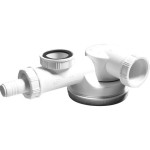Choosing the Right Tile for Your Bathroom Floor: Beyond "Lavatory"
The bathroom floor, often referred to as the "lavatory floor” in architectural and design circles, is a crucial element of any bathroom. This space faces unique challenges, requiring materials that can withstand moisture, foot traffic, and the occasional spill. One of the most popular solutions is tile, offering a wide range of styles, colors, and textures to complement any bathroom design. This article will delve into the factors to consider when selecting the perfect tile for your bathroom floor, exploring the specific features that make some tiles more suitable than others.
Factors to Consider When Choosing Bathroom Floor Tile
There are several key factors to consider when selecting bathroom floor tile. These include:
- Durability: Bathroom floors endure high levels of moisture and foot traffic, necessitating a tile that can resist wear and tear, scratches, and stains.
- Water Resistance: Water is an ever-present threat in bathrooms, making it essential to choose tiles with high water resistance. This includes both the tile itself and the grout used between tiles.
- Slip Resistance: Wet bathroom floors can be slippery, posing a safety hazard, particularly for children and elderly individuals. Tiles with a high coefficient of friction (COF) will provide enhanced traction and prevent slips.
- Style and Aesthetics: Bathroom floor tile should harmonize with the overall bathroom design. Consider the color palette, the style (modern, traditional, eclectic), and the existing fixtures and décor.
- Maintenance:** Tiles require cleaning and maintenance. Choose a tile material that is easy to clean and resistant to stains and discoloration.
Popular Tile Materials for Bathroom Floors
A variety of tile materials are suitable for bathroom floors, each with its own benefits and drawbacks:
Ceramic Tile
Ceramic tile is a budget-friendly option that comes in a vast range of colors, styles, and finishes. It is relatively easy to install and maintain, making it a popular choice for homeowners. However, ceramic tile can be porous and susceptible to scratches and stains. For increased durability, choose a glazed ceramic tile.
Porcelain Tile
Porcelain tiles are denser and more durable than ceramic tiles, making them an excellent choice for high-traffic areas like bathroom floors. They are also more water-resistant and stain-resistant than ceramic tiles. Porcelain tiles come in a variety of styles, including those that mimic the look of natural stone.
Natural Stone Tile
Natural stone tiles such as marble, granite, and slate offer unique beauty and character. However, they are more expensive than ceramic or porcelain tiles and require more maintenance. Stone tiles can be porous and susceptible to staining, so sealing them regularly is crucial.
Glass Tile
Glass tiles are a modern and stylish option that can add a touch of elegance to any bathroom. They are highly water-resistant and easy to clean. However, they can be slippery when wet and more susceptible to breakage than other tile types.
Vinyl Tile
Vinyl tile is a cost-effective and durable option for bathrooms. It is soft underfoot, making it a comfortable choice for standing for prolonged periods. Vinyl tile is also waterproof and easy to clean. However, it may not be as stylish or sophisticated as other tile materials.
Considerations for Choosing Tile Sizes and Patterns
In addition to the tile material, the size and pattern of the tiles can significantly impact the look and feel of your bathroom.
Tile Size
Large tiles create a sense of spaciousness, while smaller tiles provide a more intricate and detailed look. The size of the tiles should be proportionate to the size of the bathroom. For small bathrooms, smaller tiles are typically a better choice. In larger bathrooms, larger tiles can visually enhance the space.
Tile Patterns
Tile patterns can be a great way to create a visual effect and enhance the overall design. Common tile patterns include herringbone, subway, basketweave, and checkerboard. Consider the overall aesthetic of your bathroom and choose a pattern that complements your chosen style.
Choosing the Right Grout
Grout is the material used to fill the spaces between tiles. It's equally important to choose the right grout to ensure durability and a seamless look for your bathroom floor. When selecting grout, consider the color, the material, and the width of the grout lines. Choose a grout color that blends with the tile or contrasts for a bolder look.
In conclusion, selecting the perfect tile for your bathroom floor is an important decision that affects both the functionality and the aesthetics of the space. Understanding these factors will help you make an informed choice and create a bathroom that is both beautiful and practical.

Tile Terminology A Comprehensive Guide For Your Remodeling Project

Lavatory Designing Buildings
What Is The Difference Between A Lavatory And Water Closet Quora
What Are Some Words For Things That Found In Bathrooms Quora

Best Bathroom Flooring Options
Bathroom Floor Tiles 6 Best Options For Your New Architecture Design

25 Bathroom Floor Tile Ideas For The Prettiest Privy Ever

Top 15 Bathroom Design Trends 2024 By Our In House Designers

How To Cover Ugly Al Bathroom Floors With A Vinyl Mat The Homes I Have Made

25 Bathroom Floor Tile Ideas For The Prettiest Privy Ever
Related Posts







